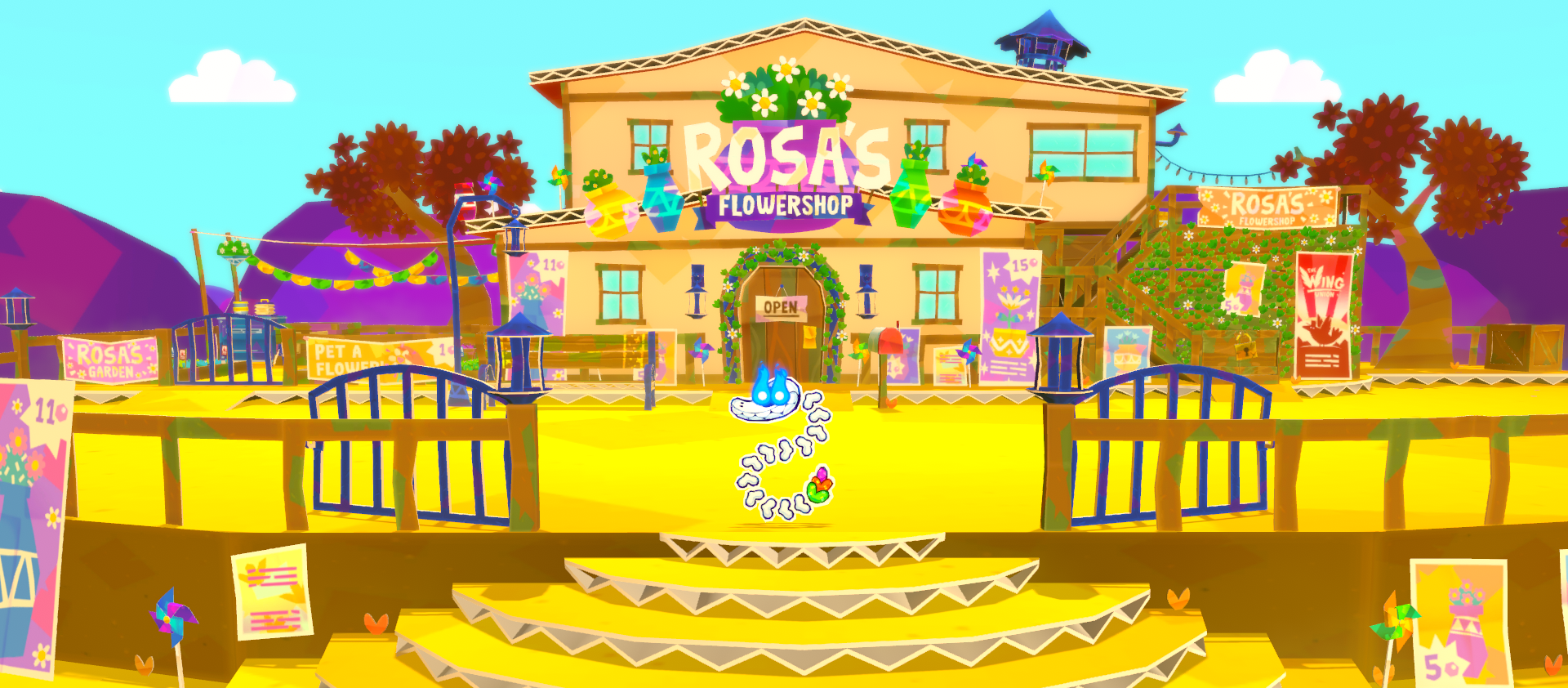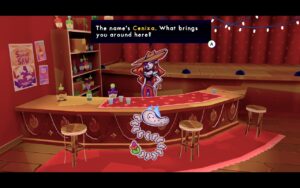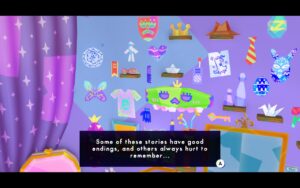
Kulebra and the Souls of Limbo Review
Playing Kulebra and the Souls of Limbo, I found myself in a liminal space trying to guess what the ultimate message of this wholesome time loop game might be.
The time loop genre continues to gain traction outside of its traditional bucket of “thinky puzzle games.” The past couple of years brought us time loop titles that ranged from bizarre to cozy, including Grunn, Space Sprouts, In Stars and Time, Slay the Princess, and many more. Kulebra and the Souls of Limbo is the latest installment in this list of quirky and creative games within this genre.
Developed by Galla and published by Fellow Traveler, Kulebra and the Souls of Limbo is a narrative-driven adventure where you play as a skeletal snake with a mysterious past, who finds himself in the land between life and the beyond. While navigating the gorgeous Latin American-inspired world you quickly discover that all of the souls trapped in Limbo are subject to a kind of curse: they are forced to relive the same day over and over again. This is where the time loopness of it all comes in. You must help the troubled souls you encounter to pass on into the next life, by conquering their past pain and trauma, but they will forget everything that happened during the previous day.
Kulebra and the Souls of Limbo in Action









Unlike many games of the time-loop genre, Kulebra places an emphasis on a relaxed pace and features surprisingly few repetitive gameplay moments. Players have ample time during each game loop to get to know the charming souls they are working to help and explore the beautiful world Galla built to house them. I sometimes struggle with time loop games that focus on optimizing each cycle, because I can get caught up in the anxiety of trying to fit in every little action and detail of the “perfect run,” but didn’t find this to be the case here (in fact, in some ways, I ran into the opposite problem).
Almost every item that you add to your inventory will stay with you from one cycle to the next. This fact eliminates the need for memorizing item locations or running around at the start of each loop to gather all your necessary equipment. Additionally, after key moments in their story arcs, characters will receive a “Soul Mark,” which acts as a checkpoint. Once they have received a Soul Mark, the character will remember everything that has happened up to that point, breaking them out of the time loop.
There were rarely any in-game days where I felt pressed for time to accomplish all the actions available to me, and in fact I often ran out of conversations or tasks before the end of the current cycle. Thankfully the game addresses this with park benches spread across the world that allow you to skip to a future moment in time. While I felt grateful for the time skipping ability and the focus on a chill experience, this did also create a strong sense that progress was slow-going. From beginning to end, pacing was the real nemesis facing off against Kulebra.
Paper Mario vibes to the max
Visually, Kulebra and the Souls of Limbo is a treat for the eyes from beginning to end, and will have Paper Mario fans absolutely giddy with its fidelity to the papercraft style. As a Paper Mario die hard, who has been rejoicing in the renaissance this aesthetic is currently experiencing, I have to say the designers at Galla pulled off an incredible feat with Kulebra. The world of the game feels both immersive and like the set of a beautiful theater production all at once.
There’s something about the characters’ movement within the world that I found both satisfying and exceptionally faithful to the Paper Mario-style tradition, to a degree that I haven’t quite seen other games achieve. I’m sure a 3D animator could tell me what it was that felt so nostalgic about the way Kulebra bobs and whirls through the streets of Sunset Saw and Plaza (and if you can explain it to me, I’d love to hear from you). But for now, I’ll just say that the entire visual and spatial experience shines as a prime example of this particular style.
Visually, Kulebra and the Souls of Limbo is a treat for the eyes from beginning to end, and will have Paper Mario fans absolutely giddy with its fidelity to the papercraft style.
Cozy, but doesn’t coddle you
In their social media marketing, Fellow Traveler describes Kulebra and the Souls of Limbo as a “cozy adventure game,” but I want to emphasize that that does not mean it is without substance or conflict in its narrative. In fact, many of the spirits’ story arcs feature deeply tragic and traumatic experiences (so much so that I think it deserves a content warning, which I haven’t seen anywhere, specifically for themes of depression and self harm). I found many of the stories of these souls quite touching and at times completely heartbreaking, although in other cases the circumstances felt a little too exaggerated to fully relate to.
When Kulebra first sets out on his journey, the first couple of souls he runs into are a mother and daughter who run a small flower shop in a dried up corner of the desert. The area is so remote that they have no town or community to speak of. Torn between personal desires and the hurt and disappointment of the past, the two find themselves emotionally stagnant, holding on so tightly to pain that peace seems like a fantasy. Theirs was a potentially compelling storyline until the details of the inciting incident behind their emotional torment (which I won’t spoil here) became clear. The whole thing wound up feeling a little too far-fetched for me to fully connect with.
Kulebra and the Souls of Limbo Trailer
Throughout the game I sensed the narrative aiming for Spiritfarer-level emotional impact, but found it falling a little short of that goal post for me. Which is not to say it completely missed the mark! But the beauty of Spiritfarer is in how relatable and, in some ways, mundane the experiences are that it relates: of loss, disappointment, shame, stubbornness, pride. Those same ideas are present in Kulebra, but wrapped in fantastical plot details that muddied the waters of those powerful emotions.
Layers of meta narrative
All that said, examining the stories that this game tells about the individual souls trapped in limbo only scratches the surface of what Kulebra and the Souls of Limbo is trying to do narratively. The story is incredibly layered and days after finishing it, I’m still working to peel apart each layer and understand the meaning behind all the key moments. Kulebra and his colleagues, who are entrusted with the ability to help the souls in Limbo move on, engage in discussions of what it means to hold such power and the dangers of holding onto anything for too long.
A folklore-inspired parable of five animals and a series of ominous messages from a mysterious bird silhouette add an additional level of meta-commentary, which I’m still processing, bringing up questions of motivation. Is Kulebra helping these souls because it’s the right thing to do? Or does the sense of altruism just make him feel like he’s doing a good deed, even when the consequences may bring more harm than good to certain souls? I thought we were getting into the territory of discussing the ethics of helping people who can’t consent to receiving help, but the commentary didn’t quite get there all the way.
Nonetheless, this game broaches a number of very subtle and sophisticated topics, which can be found in between the lines for players who choose to search a bit deeper. And I highly recommend searching those corners of the narrative for the hidden riches, because at surface level I found myself wanting a little bit more.
Get to the point, girl
Emily’s Score: 8/10
Emily was provided with a review key of Kulebra and the Souls of Limbo by Fellow Traveler
About No Small Games
No Small Games is an indie game recap and review podcast brought to you by hosts Kate and Emily! They became friends while streaming on Twitch and bonded over their love of indie video games. In each episode of No Small Games, the two will discuss an indie game they both played independently. They’ll compare their experiences: the good, the bad, their most memorable moments of their playthroughs.
Learn more about the podcast and its hosts on the About page.


